Council's DA for Newport Surf Club Upgrade Refused by Sydney North Planning Panel
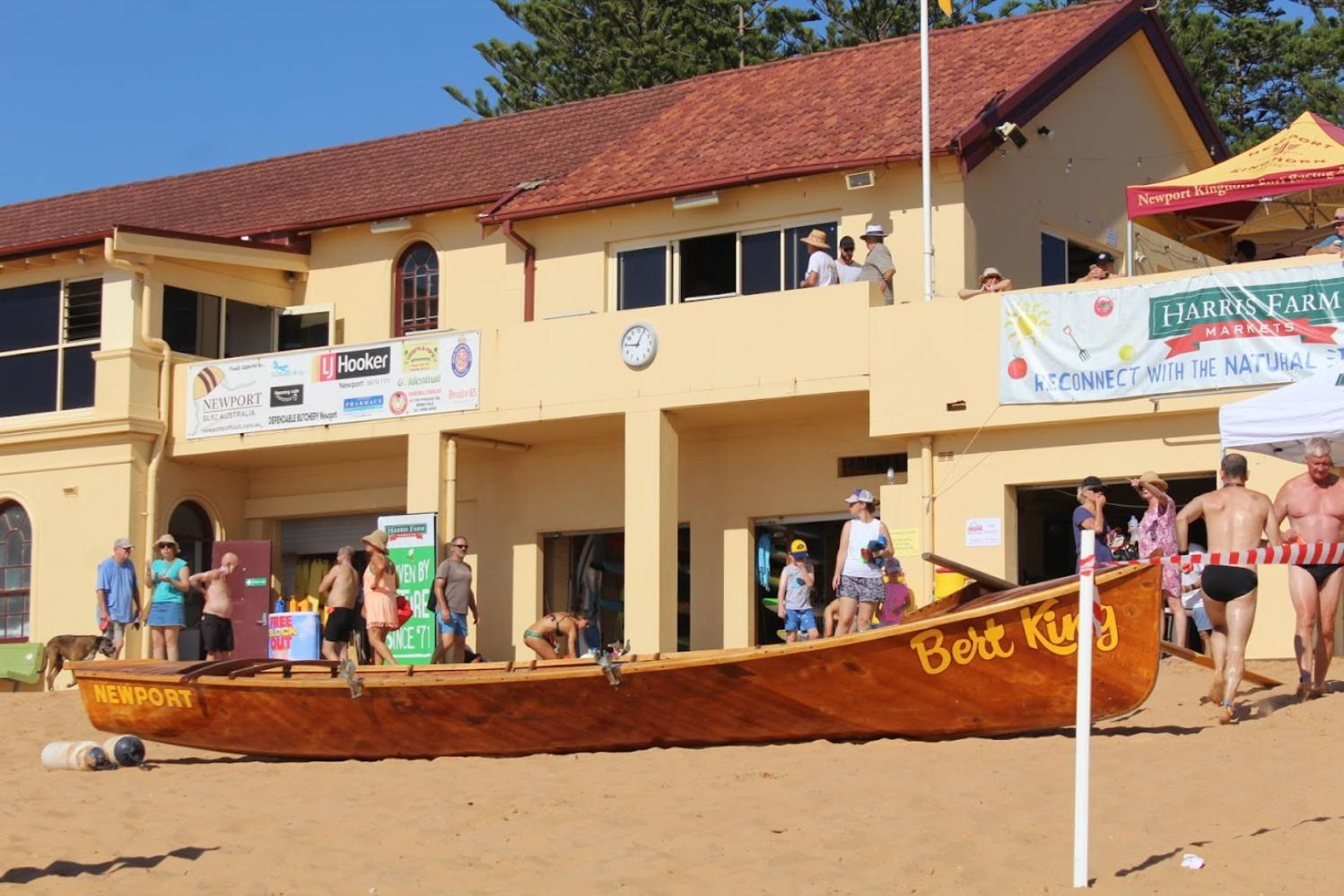
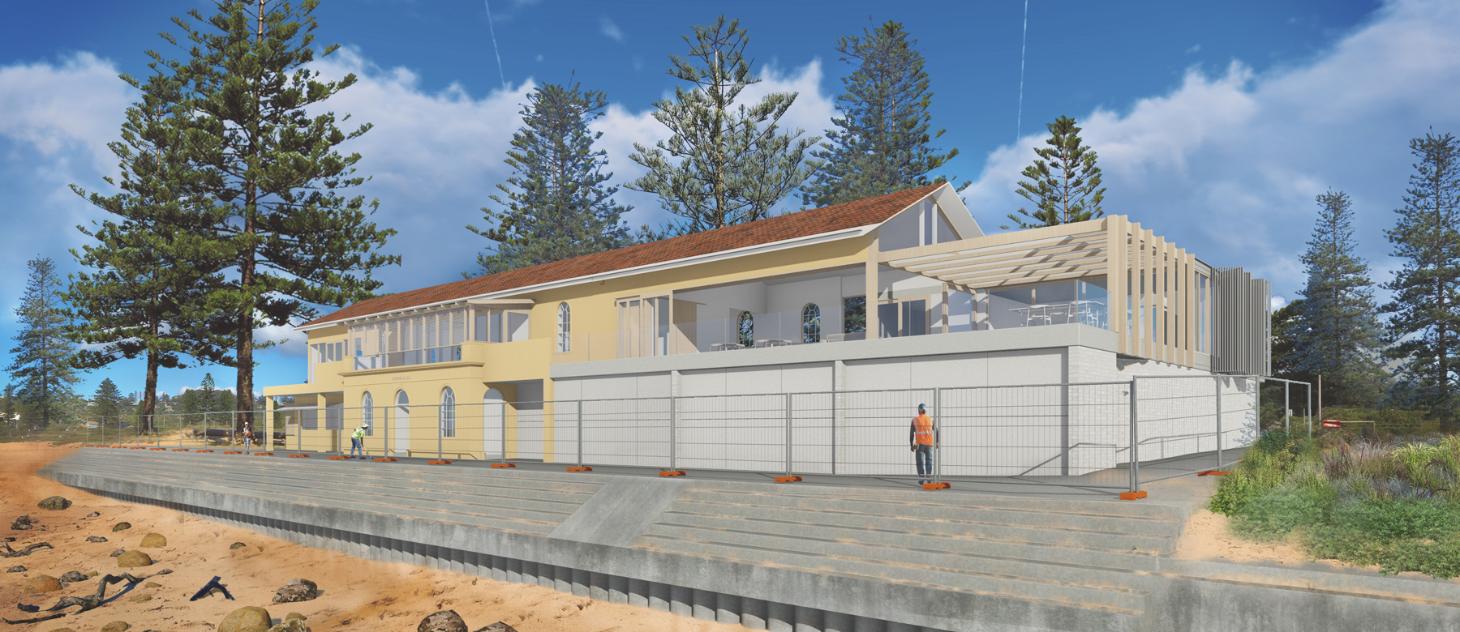
The Sydney North Planning Panel has refused the Council’s DA for Alterations and additions to Newport Surf Life Saving Club. The decision by the panel’s members was unanimous.
The DA went to the SNPP as the works, as costed, will be just over $7.3 million.
The refusal is perhaps the first time where the Coastal Management Act 2016, ‘’ An Act to make provision for the ecologically sustainable management, use and occupation of the New South Wales coast; and for related purposes’’, has featured in a local DA determination.
The impacts of coastal erosion bring into conflict public rights to enjoy Australia’s beaches and the personal interests of those endeavouring to protect private property. Coastal protective structures can serve to protect land and property, but potentially at the cost of adversely impacting on beach use and coastal processes.
In New South Wales (NSW), s 27 of the Coastal Management Act 2016 (NSW) (and previously s 55M of the Coastal Protection Act 1979 (NSW)), seeks to clear a path between these two often competing interests. It identifies assessment criteria where the public interest could be affected by the construction of coastal protection structures. In so doing, it prioritises the rights of the public consistently with the internationally recognised principles of the “Public Trust Doctrine”.
In their Statement of Reasons the SNPP cited matters raised during the September Public Meeting, where it had deferred its determination pending those points being addressed.
This was a list of 12 points and included in considering the suitability of the site when preparing the current proposal, specifically, what design and location options were considered by the Applicant and when and why were they each rejected in favour of the current proposal? In detailing the design and location options the Panel asked that the Applicant demonstrate consideration of:
the Coastal Management Act (CM Act) s 3 - Objects of the Act, and in particular item (g) “to recognise that the local and regional scale effects of coastal processes, and the inherently ambulatory and dynamic nature of the shoreline, may result in the loss of coastal land to the sea (.....), and to manage coastal use and development accordingly, and”;
suitable alternate locations for the Project given that storm inundation will continue to increase as the sea level rises, until such time as maintaining a building on the site and a beach seaward of the building becomes impractical; and
whether only the elements of the existing building that are of high or moderate heritage significance should be retained and whether the additional facilities could be accommodated in a new building that was further landward and consequently less exposed to coastal processes, thereby reducing the length of any coastal protection works.
The Panel also wanted the Applicant to provide a detailed assessment of what the beach and adjacent area may be like following a severe storm now, and in 2050 and 2080 (location of escarpment, wave inundation, loss of trees amenity or infrastructure) once the works are completed.
An assessment of the anticipated life of the development/use on the current site, given the sea level will continue to rise beyond the adopted planning period to 2080.
A summary of Coastal Hazard mapping/reporting including present, 2050, 2080 and 2100 “lines”. Advise which one the Applicant and Assessor are relying upon and what sea level rise was used for each? (Ref Carley letter report dated 8/7/21 included as App B to Horton Report on “Coastal Engineering and Flooding”, Fig 15; “SEE” Fig 14 Section 6 page 32 referenced as Horton). Which interpretation is the Applicant relying upon?
The DA presented a section of the building of high or moderate heritage significance as approximately 18.5 metres long (north-south), while the vertical seawall proposed extends along the beach for approximately 100 metres, significantly increasing the impacts. The SNPP asked were other length options considered and for comment on their viability [in accordance with the coastal vulnerability objectives presented in the CM Act, Part 2 section 7(2){c}, (d) (e), (f), (g)].
They also wanted it confirmed that Secant not Contiguous piles are to be used, for the Council to address the unknowns in the reference notes to Dwg S02 Rev D by Horton.
With regard to the end-effects assessment by the Water Research Laboratory (WRL), (Carley Fig 15) additional erosion in both the 2050 and 2080 cases extends well landward of the return wall (7m length) proposed. The Panel wanted to know how this additional erosion will be addressed. Discuss how the requirements of s 27 of the CM Act are to be satisfied and in particular, s 27(1)(b){i) and the Applicant’s commitment for the life of the development to restore the beach and land adjoining from erosion impacts.
The WRL recommended in their assessment that ‘estimates of wave overtopping and wave forces on the clubhouse be undertaken, as a scenario could arise such that the seawall prevents the clubhouse being undermined, but the building is damaged or destroyed through wave overtopping’.
The WRL cited examples of buildings which were damaged/destroyed behind undamaged seawalls occurred in the June 2016 storm include Dee Why (café), Fairy Bower (toilet block and cafe) and Coogee (SLSC clubhouse).
The Panel noted that while the Coastal Vulnerability area has not yet been mapped by Council, the subject site is clearly vulnerable to coastal hazards. The Applicant was required to provide an assessment of the proposal against the criteria included in the State Environmental Planning Policy (Resilience and Hazards) 2021 (SEPP) at Division 2, including intended maintenance in accordance with s 2.9{c), and how these criteria have been considered in assessing compliance with Division 5 General, s 2.12.
The Panel also drew attention to the Assessment Report at Section 2 in the final paragraph which states “Sea Level Rise The impact of sea level rise on beaches in NSW has been comprehensively investigated. These investigations conclude that all beaches will experience recession because of sea level rise. Such impacts at Newport Beach will not be made worse by the existence of coastal protection works of any design, including those proposed as part of this application”. The Applicant and Assessor were asked to please justify this last sentence.
They were also required to define the expected lengths of time that access from the club to the beach will be interrupted now, and by 2080 (when erosion lowers the sand level below the access stairs). Similarly they were asked to define any periods of loss of alongshore access as erosion intersects the vertical wall proposed i.e. entire beach submerged;
Council was also required to provide details of the arrangements for the restoration of the beach in times of erosion and the maintenance of these works as per section 27(1}{b) CM Act. Those arrangements must include the source of any replenishment and the means of replenishment.
Provide details of the legally binding funding for any restoration and maintenance as per section 27(2) CM Act and whether the Council has formally resolved to provide legally binding funding until 2080.
While the above list included a considerable amount of information, the Panel noted much or all of it should be available in project planning documents.
The Panel’s decision to defer determination of the DA was unanimous. The Panel also advised they would determine this matter electronically within 7 seven days after the 5th October reconvened meeting.
At that Meeting the Panel considered all the materials presented again prior to refusing the proposal.
After the September public meeting, the Panel considered refusing the application as insufficient information had been provided to justify the project design and implications for the coastline. However, given the importance of the project and site to the local community, the Panel convened a second public meeting to focus on those particular concerns detailed in the Deferral.
The second meeting on 5" October did not resolve the Panel’s concerns but did confirm that from the beginning of the project, heritage, car park and open space protection had been emphasised at the expense of considering alternative options for protection and renewal of the Surf Club asset.
Further, the SNPP was not satisfied that: a) the applicant’s written request (application to vary a development standard) adequately addresses the matters required to be addressed under cl. 4.6 (3) of the LEP; and b) the development is in the public interest because it is consistent with the objectives of cl. 4.3 (development standard) of the LEP and the objectives for development in the RE1 — Public Recreation zone.
President of Newport SLSC Guyren Smith, currently in Coolangatta where some members are competing and winning in the Coolangatta Gold, stated he was disappointed at the decision but the surf club and members were committed to persevering to resolve issues and realise the much needed upgrade of facilities to support the volunteers work on the beach.
Newport SLSC has been working on improvements for the clubhouse since 2011.
Mr. Smith said this week that he has worked in western Sydney over past 18 months on emergency callouts to help people impacted by floods.
‘’From the start of the 2019-20 season, Surf Life Saving was recognised as an emergency service; this means surf clubs and members are now on a similar level to the SES. As part of this, they are asked to assist with more emergencies, and not just on the beach.
Throughout responding to these callouts I have had an opportunity to see some of the facilities provided for volunteers in these services and have thought ‘wouldn’t it be great if we could have this at Newport’, and how much better we could serve the public with such up-to-date structures and facilities.’’ Guyren said
‘’Now we will still have to work for this summer, and possibly next summer, in substandard premises – we just want to know that when we turn a light switch on that it will work.
‘’We have worked hard with the community as we want this to be a central place for our Newport community. People expressed they wanted to retain the heritage building, and so we’ve worked to that.
‘’The footprint of the design hasn’t changed since the initial 2017 plans – the extension west will be where the storage containers we’ve been using for a few years are. Like our volunteer members, I’m sure the community would love to see them gone.
The upper floor is being reconfigured to allow for this to be used as a community space, the lower, is where we operate from in serving those on the beach.
This work needs to be done. We now have around 1000 active members, along with community using the facilities.
Northern Beaches Council, Surf lifesaving NSW and Surf lifesaving Sydney Northern Beaches have been incredibly supportive, and we are looking at options to review the decision.’’
Newport Surf Club is also supported in this matter by Pittwater MP Rob Stokes, who stated in a Private Members Statement in the NSW Parliament on Tuesday, October 11th, that surf club design must recognise and respond to the ambulatory nature of the foreshore, and new seawalls must be avoided wherever possible because they create problems elsewhere along the beach.
Mr. Stokes pointed out that at Newport, there is already a buried and poorly designed seawall.
‘’This proposal would bury a properly designed seawall directly beneath the sand landward of the existing wall. Without the project, if a severe storm occurred, the existing building would collapse and the existing rock seawall would be exposed, leaving debris across the beach and causing the very risks that the panel used as a justification to refuse the application.’’
Mr. Stokes stated that he commended the council for seeking a redetermination of the proposal, and that he would urge the Minister for Planning to take whatever action is necessary to ensure that Newport can finally complete its surf club for the benefit of everyone in New South Wales.
Miranda Korzy, Pittwater Councillor, stated to Pittwater Online News, ‘’I realise that Newport Surf Club members must be very disappointed by this decision. For a service-oriented club whose focus is the safety of beachgoers, areas like boat and gear storage, upgraded training rooms, as well as members’ and public amenities, are a reasonable ask.’’
‘’However, it’s an important decision, because it recognises that coastal erosion and sea level rise are real and will affect the site throughout the life of the building.
It also emphasises the importance of council developing a robust Coastal Management Plan, so the impact of coastal developments on surrounding areas can be properly assessed.
This is an opportunity to future proof this key community infrastructure - taking into account changes to the coastal environment that we’re now beginning to see as a result of global heating.’’
President of Surfrider Foundation Northern Beaches Brendan Donohoe, an organisation which spoke against the current proposal, citing another 100 objections that had been submitted to council by others, echoed Ms Korzy’s statement.
‘’This is an opportunity to truly consider providing a wonderful premises for Newport surf club that will also protect the public interest and the coast. There are some great examples here already, such as the new clubhouse as finally realised at Long Reef. That [surf club] will not only serve the membership and the public well for a long time into the future, but also not destroy the beach.’’ Mr. Donohue said yesterday.
‘’I couldn’t agree more with the Panel’s decision. Blind Freddy could see that clubhouse had reached the end of its life, and as much as I understand there is emotional attachment to that building, I read the Heritage report, I’ve worked in Heritage Conservation when I was working as a Town Planner for the National Trust, and the report states that the major heritage considerations are cultural. That will be maintained, that cannot be lost.
To bugger that beach to protect a building is ridiculous.''
‘’The initial plans for the clubhouse at Long Reef presented a completely inappropriate development. That then shifted through focusing on not only what is good in design but what is great in looking after the environment it sits in. This occurred because the community were genuinely included in the discussion and the available science used to guide placement as well as design. ’’
‘’Members of Newport Surf Club have been poorly advised and my heart goes out to them. I know that they’ve been working on this for a long time, to get their facilities upgraded.
No one, and particularly Surfrider, has any problem with the facilities required being met, but they should primarily for surf lifesaving, not for weddings, parties, everything and they shouldn’t be in what are the obvious hazards lines, which are currently west of the club.''
''The design for the clubhouse itself for the architecture proposed to be added onto the end is shameful. On one hand it is said that the clubhouse is sacrosanct, and I get the juxtaposition of modern architecture meeting old so you know where it starts and finishes, but that’s not the Pompidou Centre – it looked like they were building a medical centre.'' Mr. Donohoe said
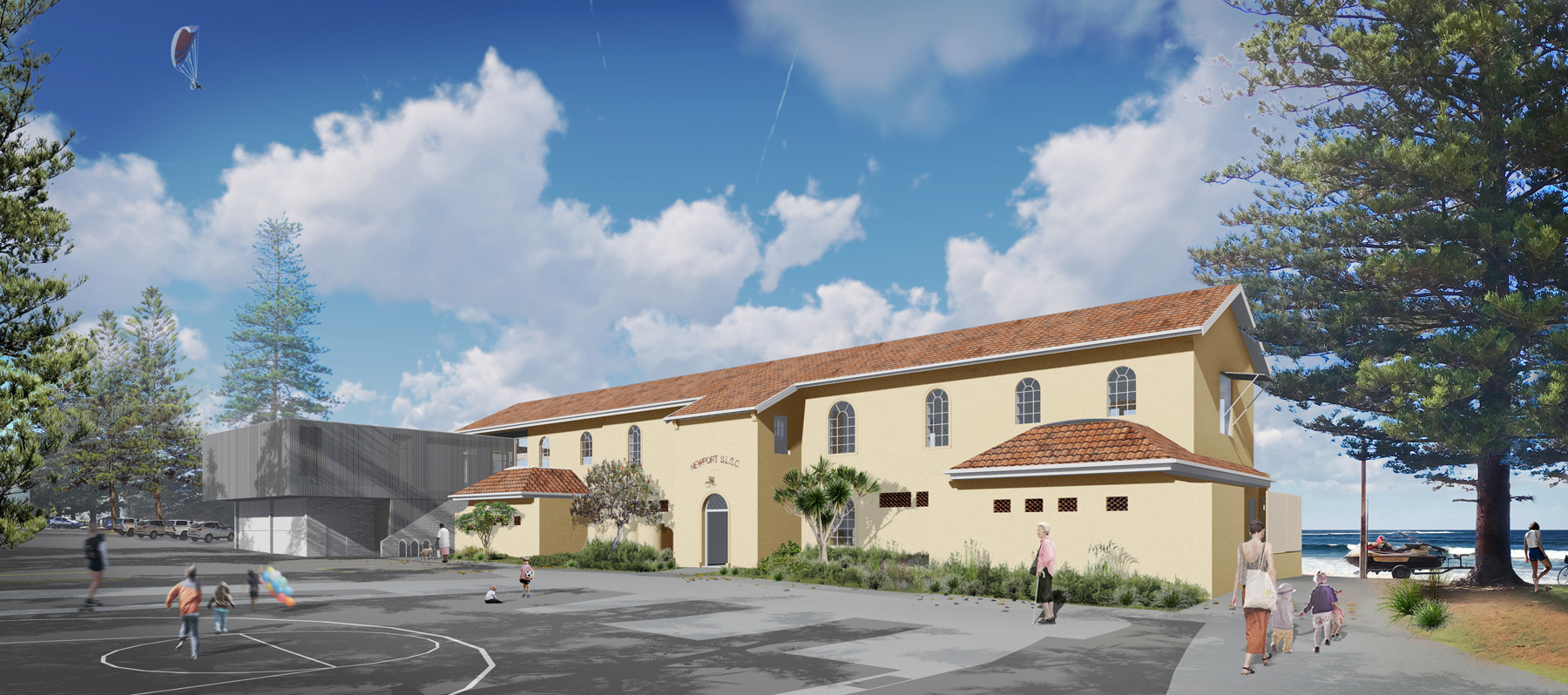
Artists Impression of the proposed West Elevation for Newport Surf Club design. From: NBC webpage for Newport Surf Club redesign
‘’There is no point denying any longer the impacts of what we are dealing with at present and to continue pursuing installing structures that will not exacerbate the impact of these processes on their surrounds, but also cost the community financially permanently, is not good design and not looking after or following the guidance in place.
‘’What has been presented is amateur and unprofessional, and they’re using our money and our land. What they’ve done at Collaroy is nothing short of disgraceful, it contradicts every bit of the spirit of the Coastal Act despite statements that every box has been ticked. It should never have got to a DA. It needed to go through a number of stages before it could be considered for a DA.
And the same should have happened with this proposal. Ultimately it was the Sydney North Planning Panel, not the local planning panel, which had some expertise on it. They just questioned the validity of the findings and there was nothing to be answered.’’
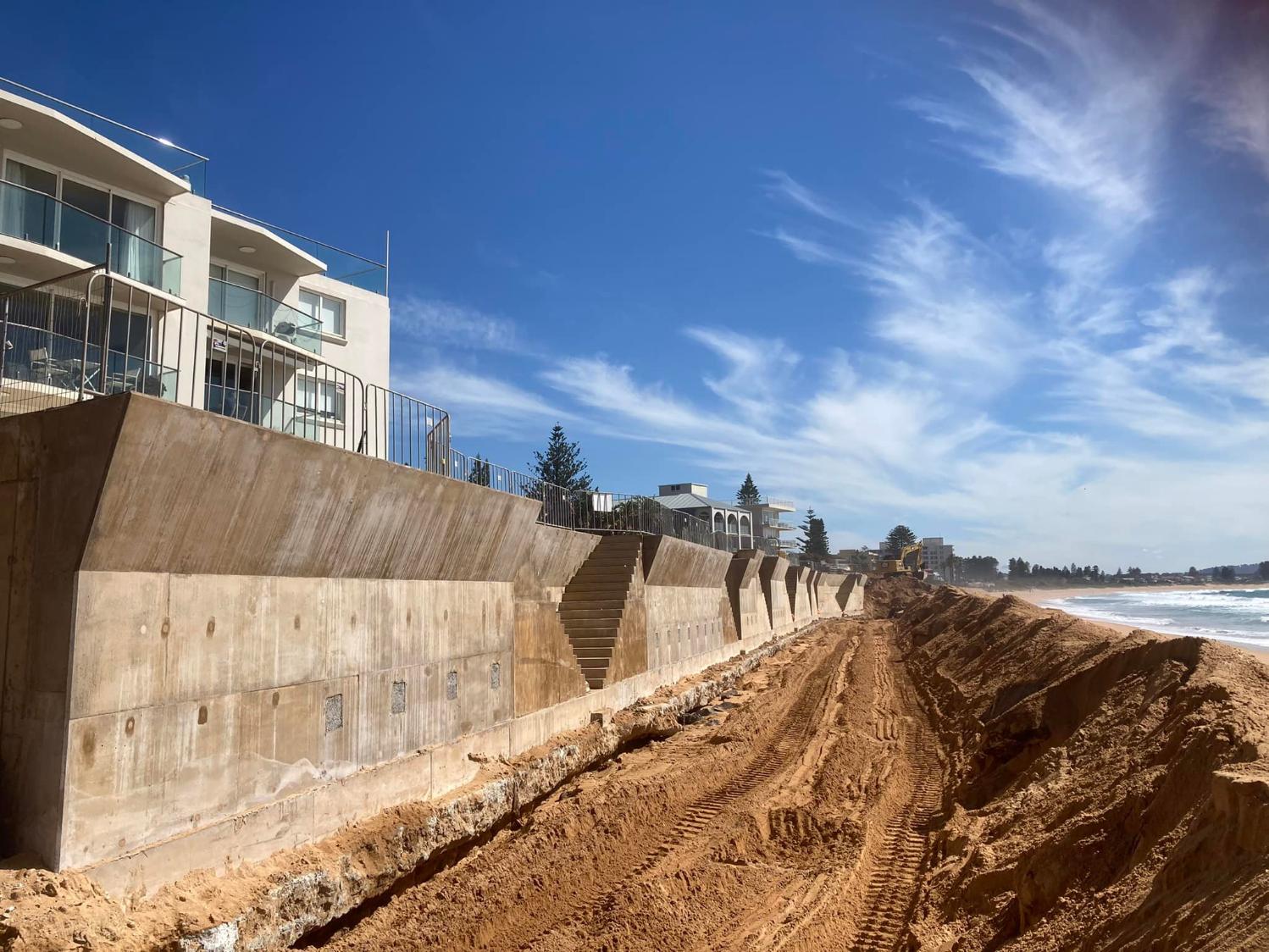
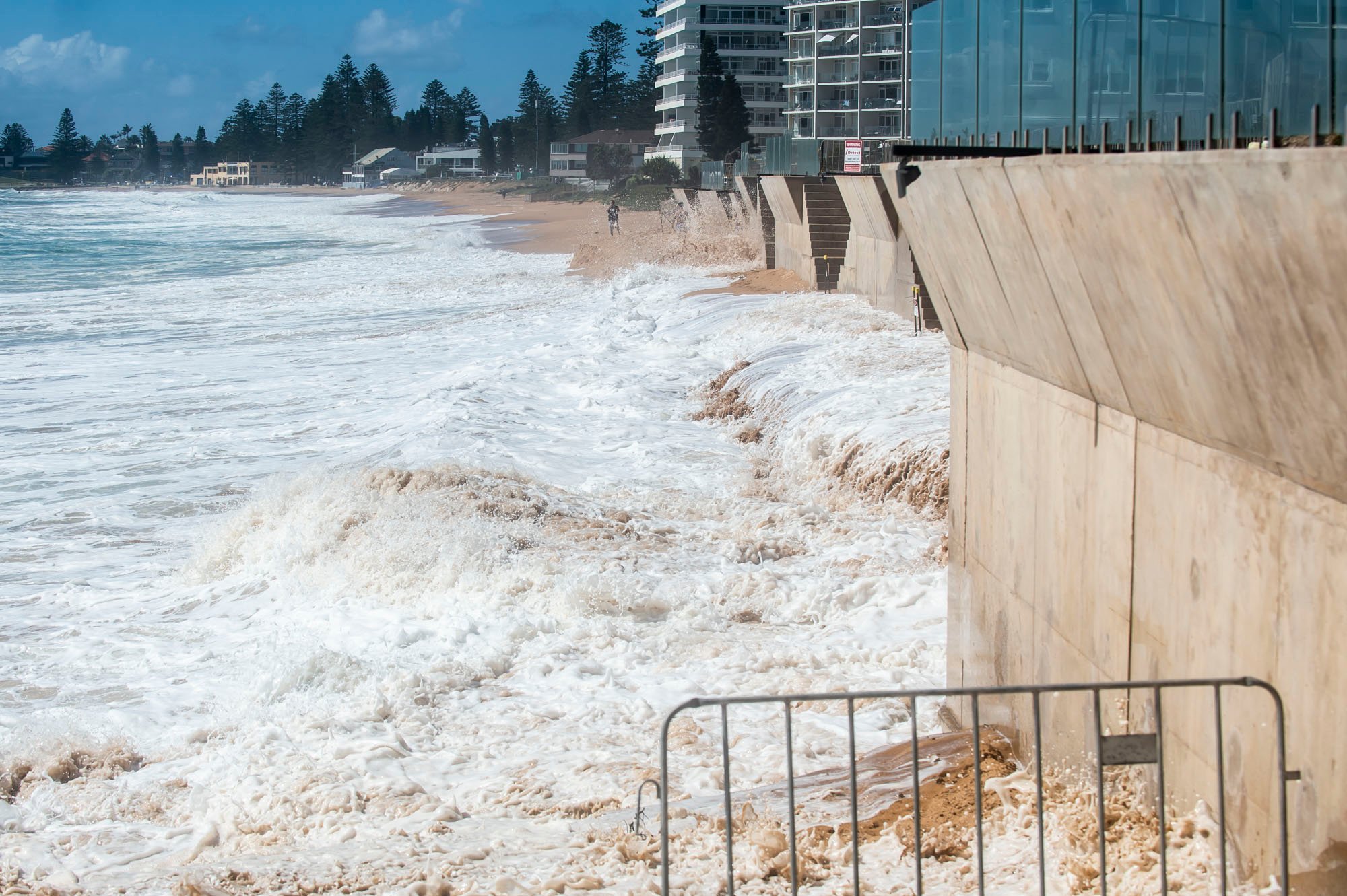
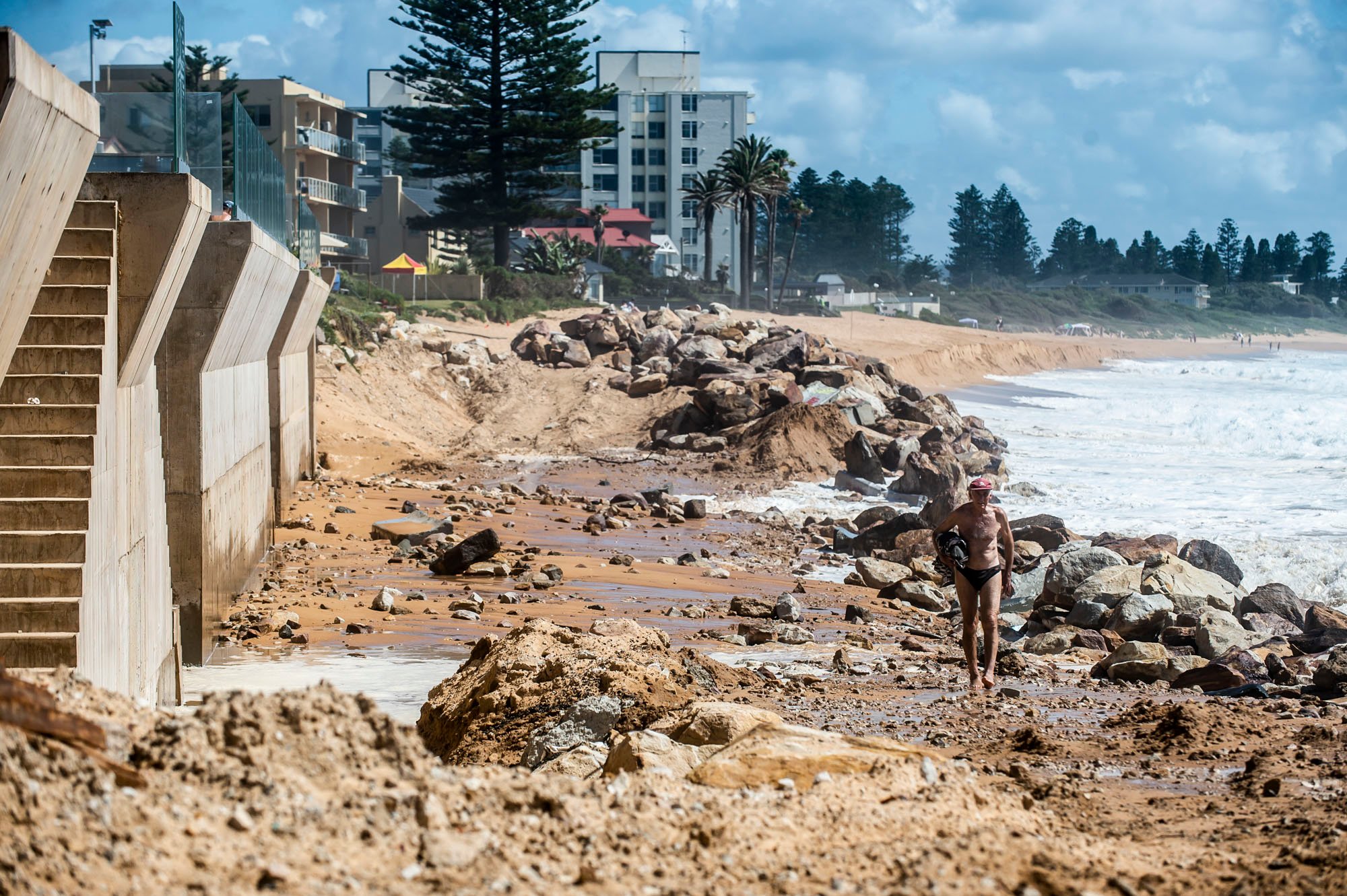
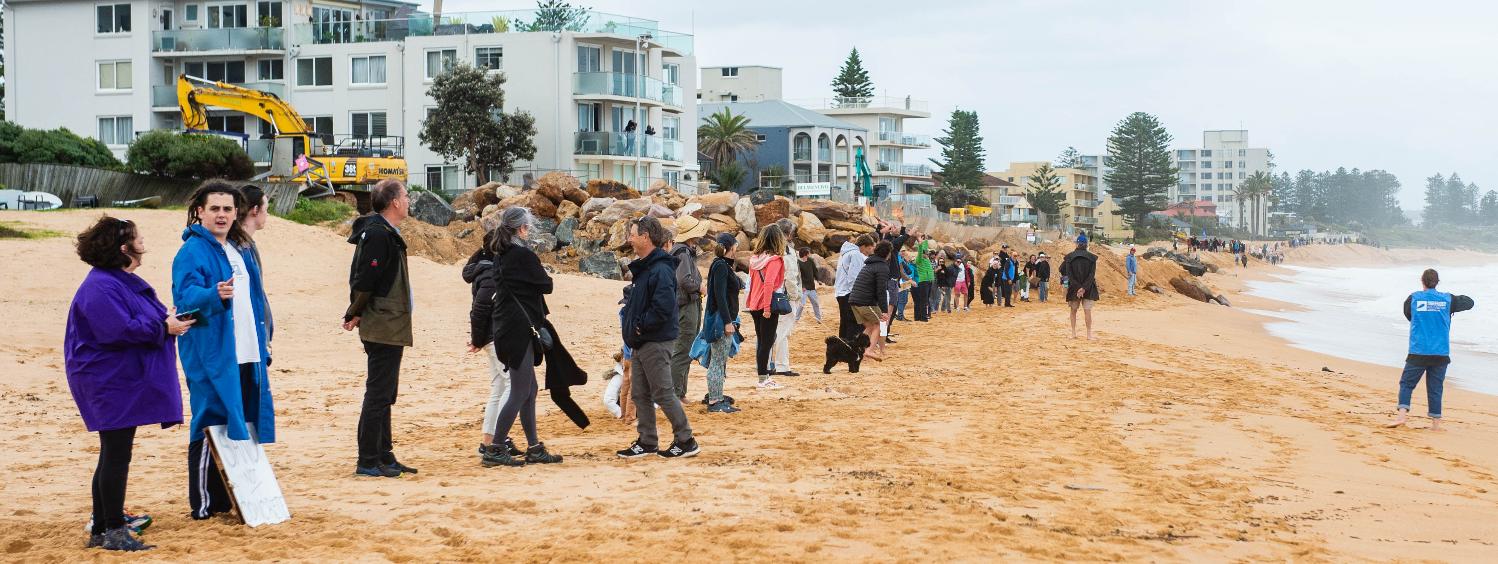
‘’Ultimately Surfrider are happy that the decision came down to respect the beach. We also recognise that seven million dollars will build you a beautiful club. I would reiterate that this presents an opportunity to design something great, such as that built with due consideration at Long Reef We can no longer ignore the science and how to respond to this in finding the best way forward.’’
Newport's objective is to educate the community from adults to children, to be competent and safe in the beach and surf environment.
This is the club the first two-way radio came out, with a radio tower that served the wider surf life saving community for 15 years. Further back progressive designs for surf craft were launched from the ideas of Newport members. Even the 1933 building now in place was the result of a whole community effort.
Newport Beach has hosted state and national surf lifesaving competitions since soon after it commenced, well over 110 years ago. The beach's' wide and long expanse lends itself to hsoting everyone all at once.
The club members have a long history of winning through despite adversity or setbacks and coming out the other end with something better and longer lasting.
No one in Newport or the greater Pittwater community will be surprised if this Odyssey results in the same.
Background
In 2011 Newport surf club approached the Council and identified the issues with their limited club house and growing membership and suggested a process of community and member consultation that the Club would implement to gauge the views of our members and the local community, with a view to expanding the building and report back. The Council agreed.
In 2012 the Club presented the Council with a positioning paper that identified feedback from Newport surf club members and the community and possible mass modelling options for the potential extension of the existing club facilities. A preferred modelling option was subsequently agreed.
Based on this paper, in 2013 the Club engaged and funded an architect to prepare a master plan for the surf club (based on the preferred model) and its adjacent grounds to overcome agreed deficiencies with the building and critical pedestrian circulation issues in the public area adjacent the Club.
In 2014 the master plan was completed and a number of meetings were held with Council to determine a way forward in order that the surf club could then fund and prepare a development application in cooperation with the Council.
After many, many meetings with Council, at a meeting held June 2017 (organised with the new Northern Beaches Council on our behalf by our State Member Rob Stokes)Newport surf club then had a timeline for the commencement of pre Development Application community consultation on the masterplan that the Club developed in 2014.
The proposed works are to provide additional storage areas, improve accessibility and provide additional amenity and community space.
Clearly this has been a long process, and there remains a longer process to see the project through to completion. However, Newport Surf Club will still need Members and Friends of Newport to voice their approval for the need to modestly expand the Club House facilities and associated works.
Volunteer Surf Lifesaving is a vital community service provided through Newport SLSC. Additionally, the surf club is a popular community hub for residents and a place that fosters and supports Youth projects that are empowering the next generation through a variety of programs, including such examples as the Surf Academy, which is helping young people achieve great things for themselves and in surf sports. Another first that our Club can be proud of is the instigation of a Nipper Programme for children with Special Needs. These are just two of several initiatives that have launched through Newport surf club. Several social events and fundraisers are held throughout the season. Some of these are to raise funds for the club to purchase gear and equipment to enhance the quality of patrols, others have been run to support community organisations.
Newport Beach SLSC hosted their inaugural Castles in the Sand and Barefoot Ball on Saturday January 15th 2017. In that instance the Newport SLSC was sharing the funds raised with Cystic Fibrosis NSW. Club Members have also held functions to support Pittwater Friends of Soibada, Mental Health initiatives, along with environment focused activities and education.
Newport SLSC ran a 3 for the Sea was on Sunday morning, March 13, 2022. The club took this as a great opportunity to clean up their beach after recent rains brought refuse onto the beach.
In 2019 Newport SLSC celebrated their 110th year of serving the community and looking after those who visit the beach. More in Newport Surf Club Celebrates 110 Years On October 19, 2019 - A Few Club Firsts
_______________________________________________________________________
The Objects of the Coastal Management Act 2016:
The objects of this Act are to manage the coastal environment of New South Wales in a manner consistent with the principles of ecologically sustainable development for the social, cultural and economic well-being of the people of the State, and in particular—
(a) to protect and enhance natural coastal processes and coastal environmental values including natural character, scenic value, biological diversity and ecosystem integrity and resilience, and
(b) to support the social and cultural values of the coastal zone and maintain public access, amenity, use and safety, and
(c) to acknowledge Aboriginal peoples’ spiritual, social, customary and economic use of the coastal zone, and
(d) to recognise the coastal zone as a vital economic zone and to support sustainable coastal economies, and
(e) to facilitate ecologically sustainable development in the coastal zone and promote sustainable land use planning decision-making, and
(f) to mitigate current and future risks from coastal hazards, taking into account the effects of climate change, and
(g) to recognise that the local and regional scale effects of coastal processes, and the inherently ambulatory and dynamic nature of the shoreline, may result in the loss of coastal land to the sea (including estuaries and other arms of the sea), and to manage coastal use and development accordingly, and
(h) to promote integrated and co-ordinated coastal planning, management and reporting, and
(i) to encourage and promote plans and strategies to improve the resilience of coastal assets to the impacts of an uncertain climate future including impacts of extreme storm events, and
(j) to ensure co-ordination of the policies and activities of government and public authorities relating to the coastal zone and to facilitate the proper integration of their management activities, and
(k) to support public participation in coastal management and planning and greater public awareness, education and understanding of coastal processes and management actions, and
(l) to facilitate the identification of land in the coastal zone for acquisition by public or local authorities in order to promote the protection, enhancement, maintenance and restoration of the environment of the coastal zone, and
(m) to support the objects of the Marine Estate Management Act 2014.
As outlined in Thom (1), in other common law jurisdictions, the principles of the “Public Trust Doctrine” (PTD) provide a framework for balancing these competing interests. At the heart of the doctrine is that:
(1) certain natural resources are held by the government “in trust” for current and future generations;
and
(2) the government has an affirmative ongoing duty to safeguard the preservation of those resources for the benefit of the general public.
Therein, the doctrine supports “the community’s expectation that the State will protect the free use and amenity of public lands”.
1. Bruce Thom, “Climate Change, Coastal Hazards and the Public Trust Doctrine” (2012) 8(2) Macquarie Journal of International and Comparative Environmental Law 21, 21